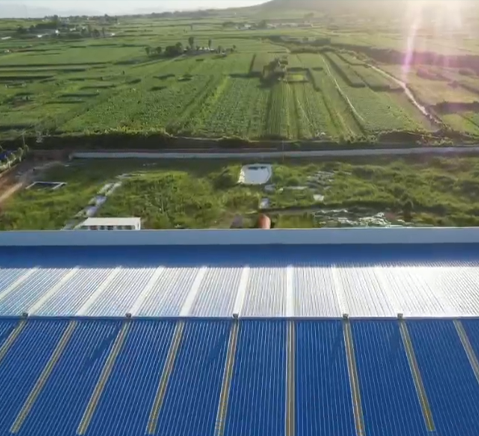Aug . 19, 2024 04:24 Back to list
Submersible Water Pump for Efficient Well Water Extraction and Management Solutions
Submersible Well Water Pumps An Overview
Submersible well water pumps play a crucial role in modern water extraction and management, making them a vital tool for both residential and agricultural purposes. These pumps are designed to operate underwater, in wells that can range from a few dozen to several hundred feet deep. Their primary function is to lift water from aquifers to the surface, providing a reliable source for drinking water, irrigation, and various industrial applications.
How Submersible Pumps Work
The operation of submersible well water pumps is relatively straightforward. These pumps consist of a motor and a pump that are both sealed within a single unit. By placing the entire assembly below the water surface, the pump is able to operate efficiently in a submerged state. The motor is connected to a series of impellers, which help draw water into the pump and propel it upward through a discharge pipe. The submersible design not only protects the motor from the water but also prevents issues related to cavitation, which can reduce the pump’s efficiency and lifespan.
One of the significant advantages of submersible pumps is their ability to handle large volumes of water at considerable depths. Unlike jet pumps, which use suction to pull water to the surface, submersible pumps push water up from beneath, making them more efficient and capable of lifting water from greater depths.
Applications of Submersible Well Water Pumps
Submersible well water pumps are widely used in various applications
1. Residential Use In many rural areas, homes rely on wells for their water supply. Submersible pumps are commonly installed in these wells to ensure a steady flow of potable water for household use. They are particularly favored for their quiet operation and low maintenance.
2. Irrigation Farmers and agriculturalists heavily depend on submersible pumps to irrigate their fields. These pumps can efficiently deliver water to crops, helping to sustain agricultural productivity even in arid regions.
submersible well water pump

3. Industrial Use Submersible pumps are also utilized in various industrial processes where water extraction is necessary. This includes construction sites, drainage tasks, and mining operations, where reliable water removal is a critical aspect.
4. Wastewater Management In wastewater treatment facilities, submersible pumps play a vital role in managing and transferring sewage and wastewater. Their ability to handle solids makes them suitable for such environments.
Advantages of Submersible Well Water Pumps
1. Efficiency Submersible pumps are incredibly efficient, especially when compared to traditional pumps. Their ability to push water rather than pulling it minimizes energy consumption.
2. Space-Saving Because submersible pumps are housed underground, they require less surface space, making them suitable for locations where installation flexibility is needed.
3. Long Lifespan Constructed from durable materials like stainless steel or thermoplastic, submersible pumps are designed to withstand harsh conditions, leading to a longer operational lifespan.
4. Reduced Noise Being submerged in water dampens the noise generated by the pump, making them ideal for residential areas where noise pollution could be a concern.
Conclusion
In summary, submersible well water pumps are an indispensable asset in ensuring efficient water management across various sectors, providing both practical solutions and sustainable resource management. As communities continue to face challenges related to water scarcity, the importance of reliable water pumping systems, such as submersible pumps, cannot be overstated. With their efficiency, durability, and versatile applications, these pumps are well-equipped to meet the growing demands for water in our increasingly dynamic world.
-
Submersible Water Pump: The Efficient 'Power Pioneer' of the Underwater World
NewsJul.01,2025
-
Submersible Pond Pump: The Hidden Guardian of Water Landscape Ecology
NewsJul.01,2025
-
Stainless Well Pump: A Reliable and Durable Pumping Main Force
NewsJul.01,2025
-
Stainless Steel Submersible Pump: An Efficient and Versatile Tool for Underwater Operations
NewsJul.01,2025
-
Deep Well Submersible Pump: An Efficient 'Sucker' of Groundwater Sources
NewsJul.01,2025
-
Deep Water Well Pump: An Efficient 'Sucker' of Groundwater Sources
NewsJul.01,2025
-
 Submersible Water Pump: The Efficient 'Power Pioneer' of the Underwater WorldIn the field of hydraulic equipment, the Submersible Water Pump has become the core equipment for underwater operations and water resource transportation due to its unique design and excellent performance.Detail
Submersible Water Pump: The Efficient 'Power Pioneer' of the Underwater WorldIn the field of hydraulic equipment, the Submersible Water Pump has become the core equipment for underwater operations and water resource transportation due to its unique design and excellent performance.Detail -
 Submersible Pond Pump: The Hidden Guardian of Water Landscape EcologyIn courtyard landscapes, ecological ponds, and even small-scale water conservancy projects, there is a silent yet indispensable equipment - the Submersible Pond Pump.Detail
Submersible Pond Pump: The Hidden Guardian of Water Landscape EcologyIn courtyard landscapes, ecological ponds, and even small-scale water conservancy projects, there is a silent yet indispensable equipment - the Submersible Pond Pump.Detail -
 Stainless Well Pump: A Reliable and Durable Pumping Main ForceIn the field of water resource transportation, Stainless Well Pump has become the core equipment for various pumping scenarios with its excellent performance and reliable quality.Detail
Stainless Well Pump: A Reliable and Durable Pumping Main ForceIn the field of water resource transportation, Stainless Well Pump has become the core equipment for various pumping scenarios with its excellent performance and reliable quality.Detail
